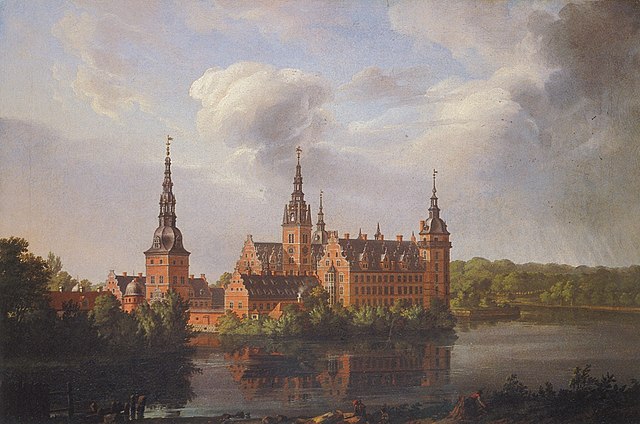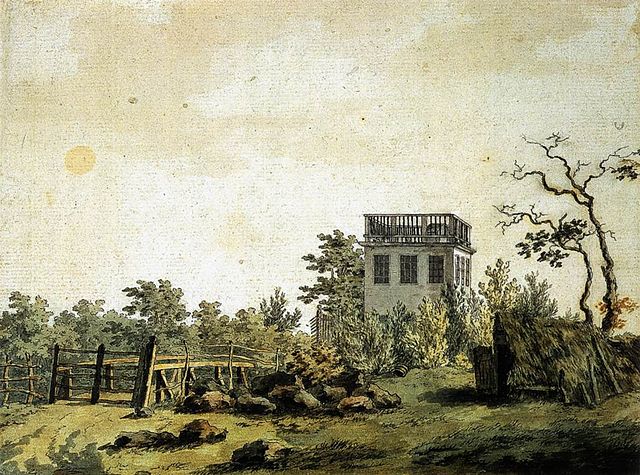Johan Christian Claussen Dahl, often known as J. C. Dahl or I. C. Dahl, was a Danish-Norwegian artist who is considered the first great romantic painter in Norway, the founder of the "golden age" of Norwegian painting. He is often described as "the father of Norwegian landscape painting" and is regarded as the first Norwegian painter to reach a level of artistic accomplishment comparable to that attained by the greatest European artists of his day. He was also the first to acquire genuine fame and cultural renown abroad. As one critic has put it, "J.C. Dahl occupies a central position in Norwegian artistic life of the first half of the 19th century.
Portrait of Johan Christian Dahl, by Carl Christian Vogel von Vogelstein, 1823
Frederiksborg Castle with an Approaching Storm, 1814
View of Świnoujście
Portrait of J.C. Dahl Christian Albrecht Jensen (c 1815)
Caspar David Friedrich was a German Romantic landscape painter, generally considered the most important German artist of his generation. He is best known for his allegorical landscapes, which typically feature contemplative figures silhouetted against night skies, morning mists, barren trees or Gothic ruins. His primary interest was the contemplation of nature, and his often symbolic and anti-classical work seeks to convey a subjective, emotional response to the natural world. Friedrich's paintings characteristically set a human presence in diminished perspective amid expansive landscapes, reducing the figures to a scale that, according to the art historian Christopher John Murray, directs "the viewer's gaze towards their metaphysical dimension".
Gerhard von Kügelgen's portrait of Friedrich, c. 1808, Hamburger Kunsthalle
Caspar David Friedrich, by Christian Gottlieb Kuhn (1807), Albertinum, Dresden
Wanderer above the Sea of Fog (1818), Kunsthalle Hamburg
Landscape with Pavilion (1797). This early work shows typical themes: ragged landscape, closed gate, building of uncertain purpose.








